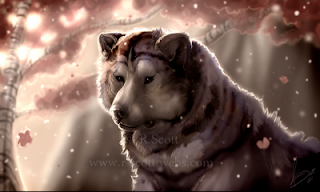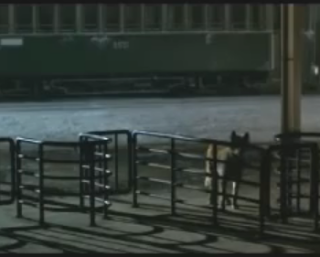When we brought home our 8 week old Akita puppy, a meek little 16 pound ball of fur, our senior chihuahua mixes ran out, barking, to investigate. The Akita pup hid under the car from them.
For her first 6 months, if anyone spoke to her, she would pee. She was subservient and mild mannered. We raised her with love and care, socializing her daily, meeting new people and new dogs every day under safe and pleasant circumstances. In other words, she was raised in a way that will surely result in a docile, friendly dog, according to the current fur-mom theories.
Fast forward 2 years - our now 100 pound Akita has become a strong, calm, confident dog.
While still very sweet towards her human pack, she's not so sweet when meeting a new dog. It's always a question - will she like the other dog, or not? If she doesn't like them, that other dog is on very thin ice.
Just to be clear, she's fine with dogs that she grew up with.
But now we have to be very careful with introductions. I've seen her not liking a dog and it can be kind of a big deal - and beyond that, anything else that moves really brings out her prey drive. So, despite all our careful socialization, she has turned into this hard edgy primitive canine, at least when it comes to other animals - or strangers.
None of this comes as a surprise to those knowledgeable of the breed. It's standard behavior. Nothing in how we raised her has anything to do with these breed specific behaviors.
In other words, the old "it's all in how you raise them" turns out to be a myth. The genetic aspect turns out to be a far more important factor.
Of course, this is nothing new - pointers point, retrievers retrieve, shepherds herd, guardians guard, hunters hunt...
And bloodsport dogs do bloodsport:
 |
| Innocence lost: before and after encounter with pit bull |
Dog fighters have selectively bred generations of pit bulls to view dogs as targets, to give no signal of their intent to attack, to launch a sustained, relentless attack, despite injury suffered, and to continue the attack regardless of whether the victim fights back, submits, cries, or tries to run away.
True to their genetic heritage, loose "family pit bulls" kill tens of thousands of pets and farm animals every year, and many of those pets were killed in their own yards, or even in their own houses, where they should have been safe.
 |
| Innocent dog savaged in a pit bull home invasion. She did not survive |
While pit bulls are known for their animal aggression, it's worth noting that pit bulls have also killed more Americans than any other breed, in every single decade since 1851. In recent years, pit bulls have been killing vulnerable humans at 3-4 times the rate of all other breeds combined. None of these facts have anything whatsoever to do with how the pit bulls were raised, or treated.
Another unusual pit bull characteristic is the penchant for maiming, disfiguring or killing their human companions. About half of all fatal pit bull attacks target their owners or other family members - something that would be unthinkable for any dog breed that wasn't created specifically for cruelty and violence.
Given these facts, how can anyone insist with a straight face that "it's all in how you raise them" - that they could literally love away, or train away, the very stubborn genetic imperatives of a type of dog which is the product of centuries of careful selective breeding to enjoy torturing and killing animals for sport?
 |
| Pit bull, happy and relaxed after doing what it was bred to do. |
I'm looking at you, pit bull activists.









































